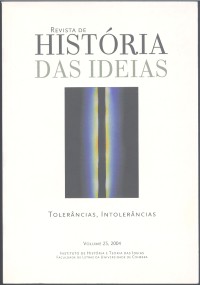Please use this identifier to cite or link to this item:
https://hdl.handle.net/10316.2/93150| DC Field | Value | Language |
|---|---|---|
| dc.contributor.author | Lemos, Mário Matos e | - |
| dc.date.accessioned | 2018-05-07T14:23:00Z | |
| dc.date.accessioned | 2020-10-01T08:41:27Z | - |
| dc.date.available | 2018-05-07T14:23:00Z | |
| dc.date.available | 2020-10-01T08:41:27Z | - |
| dc.date.issued | 2004 | - |
| dc.identifier.issn | 2183-8925 (digital) | - |
| dc.identifier.issn | 0870-0958 | - |
| dc.identifier.uri | https://hdl.handle.net/10316.2/43704 | - |
| dc.description.abstract | Os condicionalismos a que sempre esteve sujeita a imprensa soviética - imprensa no seu lato sentido de meios de comunicação - são bem conhecidos. Menos conhecido, porém, é o samizdat, termo geral usado para definir os manuscritos postos a circular clandestinamente e que procuravam quebrar o monopólio informativo do Estado. O conceito é anterior, mas a palavra samizdat aparece escrita pela primeira vez em Maio de 1967. Até à morte de Estaline a comunicação clandestina não teve grande importância, mas a partir de 1954, depois do discurso de Kruschov que condenou a política estaliniana, começaram a aparecer, principalmente nos meios universitários, sob a forma manuscrita ou dactilografada, antologias de poesia e jornais literários; surgiram depois os romances (o Dr. Jivago, de Pasternak, é um exemplo importante) e os samizdat periódicos, meios de comunicação política interna que contrariavam a política de informação oficial, o mais importante dos quais é, provavelmente, a Crónica dos Assuntos Correntes, que tinha as características de um jornal e começou a aparecer em 1968 prosseguindo, irregularmente, claro, durante vários anos. | por |
| dc.description.abstract | The restrictive conditions to which the soviet press - in the sense of mass media - was always submitted are well-known. Less known is samizdat, a word used to define the manuscripts put into circulation clandestinely intending to break the informative monopoly of the State. The concept already existed, but the word samizdat is written for the first time in May 1967. Until Stalin's death clandestine communication is not very significant, but, since 1954, after Khrushchev's speech condemning Stalin's policy, anthologies of poetry and literary journals, manuscripted or typed, then novels, as Pasternak's Dr. Zhivago, began circulating, specially in the universities. Later, intend to counter the internal information politics, emerged periodical samizdat, of which the probably most important is the Chronicle of Current Events, first edited in 1968, which had all the characteristics of a periodical. | eng |
| dc.language.iso | por | - |
| dc.publisher | Imprensa da Universidade de Coimbra | - |
| dc.rights | open access | - |
| dc.title | União Soviética: a outra informação | por |
| dc.title.alternative | Soviet Union: the alternative information | por |
| dc.type | article | - |
| uc.publication.collection | Revista de História das Ideias vol. 25 | - |
| uc.publication.firstPage | 455 | - |
| uc.publication.lastPage | 483 | - |
| uc.publication.location | Coimbra | - |
| uc.publication.journalTitle | Revista de História das Ideias | - |
| uc.publication.volume | 25 | por |
| dc.identifier.doi | 10.14195/2183-8925_25_13 | - |
| uc.publication.orderno | 14 | - |
| uc.publication.area | Artes e Humanidades | - |
| uc.publication.manifest | https://dl.uc.pt/json/iiif/10316.2/93150/252725/manifest?manifest=/json/iiif/10316.2/93150/252725/manifest | - |
| uc.publication.thumbnail | https://dl.uc.pt/retrieve/11962731 | - |
| item.grantfulltext | open | - |
| item.fulltext | With Fulltext | - |
| Appears in Collections: | Revista de História das Ideias | |
Files in This Item:
| File | Description | Size | Format | |
|---|---|---|---|---|
| uniao_sovietica_a_outra_informacao.pdf | 1.73 MB | Adobe PDF |  |
Items in DSpace are protected by copyright, with all rights reserved, unless otherwise indicated.
